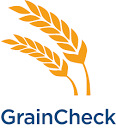Farmers need a good understanding of the nutrients removed from the soil by the crop each year to determine what must be replaced. If soil nutrients are not replenished, then crop yields will deteriorate over time. As well as sampling and monitoring your soil nutrient levels, calculating actual nutrient removals helps manage fertiliser inputs more precisely and assess current and finetune future crop nutrition policies. Testing your grain nutrient offtake will also help you assess the grain’s suitability for specific markets by checking protein and zinc levels, and provide evidence of seasonal issues such as poor rooting, compaction or poor establishment.
While there are guide figures in the AHDB Nutrient Management Guide, these are averages which may mask a wide range of results. To make sure you have a more accurate guide of the removals from your fields, arrange for grain samples to be tested.
Grain nutrient content
The nutrient content of grain is a good indicator of the crop’s ability to extract nutrients from the soil, which is affected by the field’s condition. If the field is too compacted, root development is adversely impacted and nutrient uptake, especially phosphate, is restricted. Bear in mind that, if the soil pH has dropped below suitable levels, it will reduce the availability of all nutrients apart from manganese and iron.
Potassium affects both yield and quality of grain, increases water retention in plants and helps plants resist disease. Phosphorous is the chief regulator of solution concentrations throughout the plant and controls cell sap content to support the movement of all materials within it. Both are required in effective crop growth and cannot be used interchangeably. It is worth being aware of the levels of both in order to maximise yield potential and profitability.
Over the last ten years, mill inlet test results have shown a steady decline in grain phosphate content, with the average slipping by 15%, indicating that many crops have sub-optimal nutrition. 75% of ADAS YEN samples were also found to be deficient in one or more nutrients. Grain testing will help you make sure yours are not in this situation.
The results of NRM’s new grain analysis service, GrainCheck, are benchmarked against ADAS published critical values to give you context on your grain nutrient content. Nutrient values are reported as a percentage of the dry matter of the sample, whereas the removal guidelines in the Nutrient Management Guide display them as the oxide in the fresh sample. For example, phosphate in wheat grain is reported as 6.5kg P2O5 per tonne of fresh grain. Our handy online calculator is also available to convert P & K results from your GrainCheck report into kg/ha of P2O5 and K20 offtake based on your actual yields achieved.
How to take grain samples
Grain samples should be collected during harvest. While this may seem less of a priority at a busy time of the year, an end-of-season review to evaluate what went well, what needs to be improved upon and what can be done differently next year is invaluable.
Samples can be collected at a number of stages during harvest. The first method would be to take them directly from the combine harvester when it is still in the field. Although this is possible, many would opt to collect samples taken from each trailer load, or at the farm’s grain intake point.
Whenever you choose to take them, it is important to keep a record of which fields the individual samples have been taken from to get the most out of grain analysis. This ensures that results accurately reflect the nutrient grain offtake of each field, so you can adapt your crop nutrition policy for each area as required.
Take two samples from each trailer load from a field and place them in a bucket. After the last trailer from the same field is tipped, mix the contents of the bucket together thoroughly. Then, take a subsample (250g), put it into a bag, and label it to send to NRM for analysis.
Get ready for this harvest now
Grain analysis will help you form nutrition plans for this autumn and the coming spring. Now is the time to plan the collection of grain samples from each field, and to discuss with your agronomist or contact NRM directly to arrange for analysis.
We will supply everything you need to take your samples. Get in touch now on 01344 886338 to request a sample kit or speak to your agronomist to book our comprehensive GrainCheck service today.
View the GrainCheck brochure here
View an example GrainCheck report and technical details here
View a series of blogs by Alli Grundy on the value of testing the nutrient content of your grain at the links below



